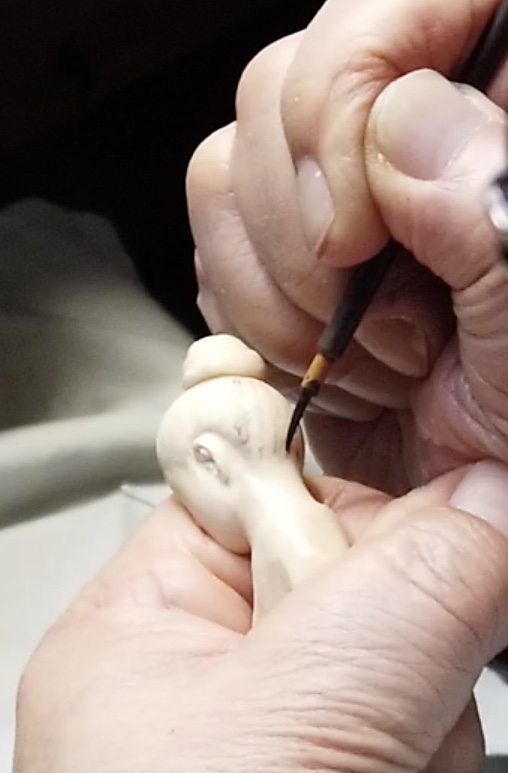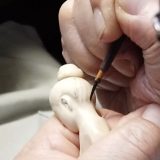In this footage, my father continues the carving of the hair on the head as in the video “From middle to finishing processes of a face model, part 1.”
While in part 1 he used a pencil to draw preliminary guides, in this video he demonstrates the use of thin sumi ink (made using an inkstick and inkstone with a little more water than usual) which has traditionally been used for tusks and horns. (please see part 1 for details regarding pencils and sumi ink.)
After drawing the guides, he gets back to carving the hair on the head. Although he talks about similar things as before, some topics are new.
For instance, from around 1:28 he talks about some differences between the traditional method of carving hair on the head and katagiri-bori technique that he often does for the hair.
He makes reference to the type of hidari-ba scrapers known as otama, meaning a “soup ladle” in Japanese. This type is most likely so named for its round shape.
The round shape (edge) makes a U-shaped groove. On the other hand, the katagiri-bori is a technique to make a V-shaped groove that is tilted so that one side is vertical. Even though my father primarily uses the latter for the carving of hair, he also uses otama according to the situation. In the video, he says that he tries everything that he thinks suitable.
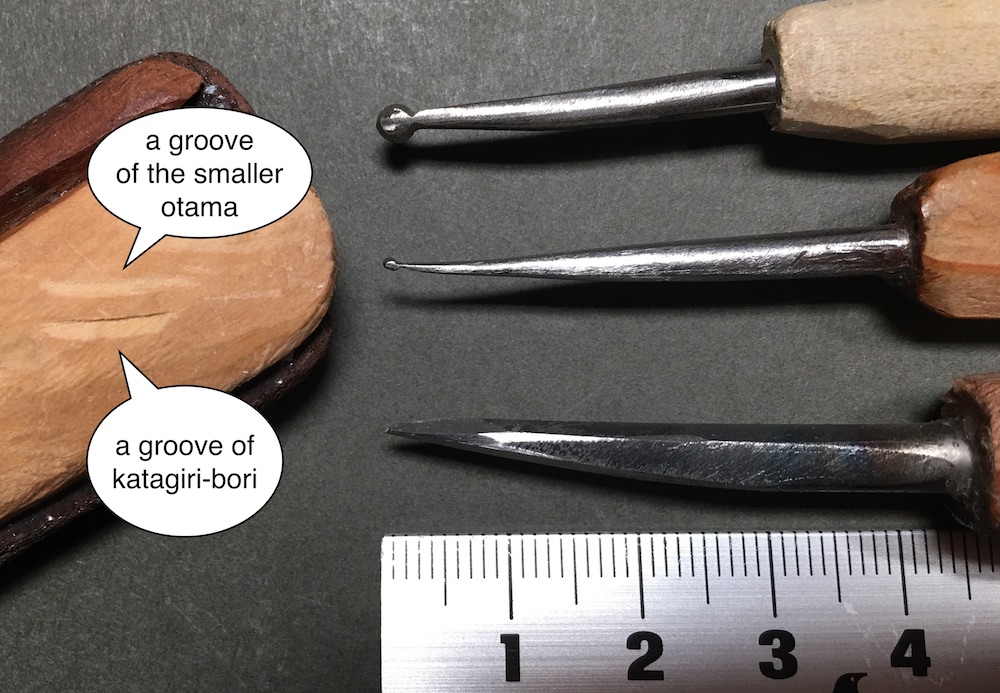
The third scraper is one my father often uses for this purpose.
The wooden piece on the left shows a groove of the smaller otama and that of katagiri-bori done by the third scraper.
The cross sections would look like these.
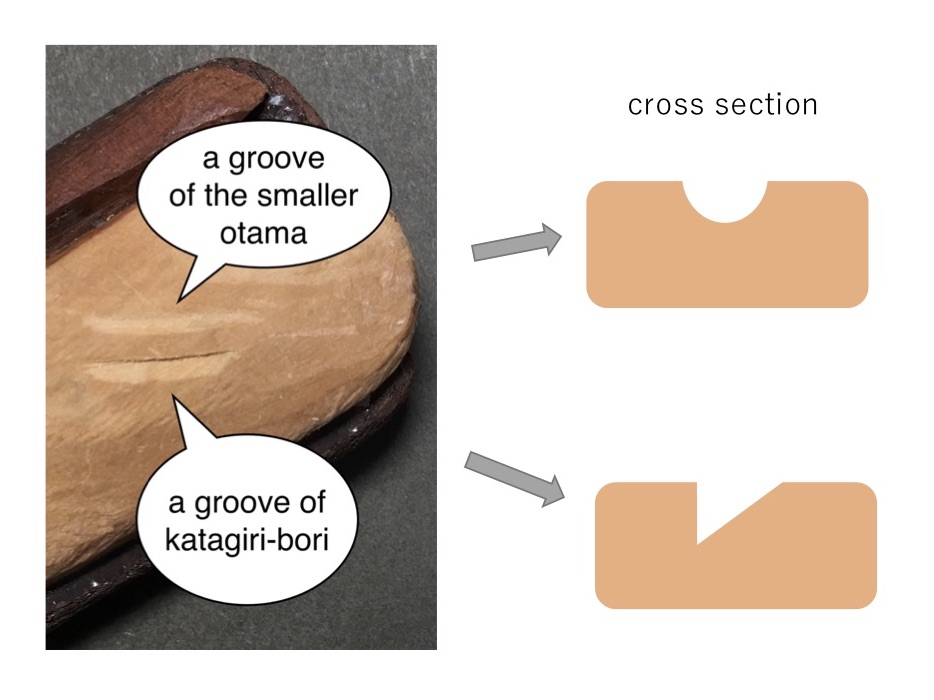
In addition, from around 14:40, my father explains how a scraper with a saw-like blade is made (the blade can be seen in the previous post). He also mentions some tips in making kime-no-kogatana (lit. defining knives).
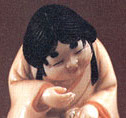
At the beginning of the footage, he says “Start, kachin!”
It is his joke, referring to the call “Action!” and the “clap” sound of the clipperboard used in filmmaking, as if he were making a movie.
He is a big fan of movies.
